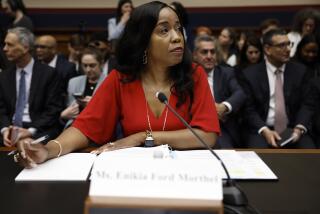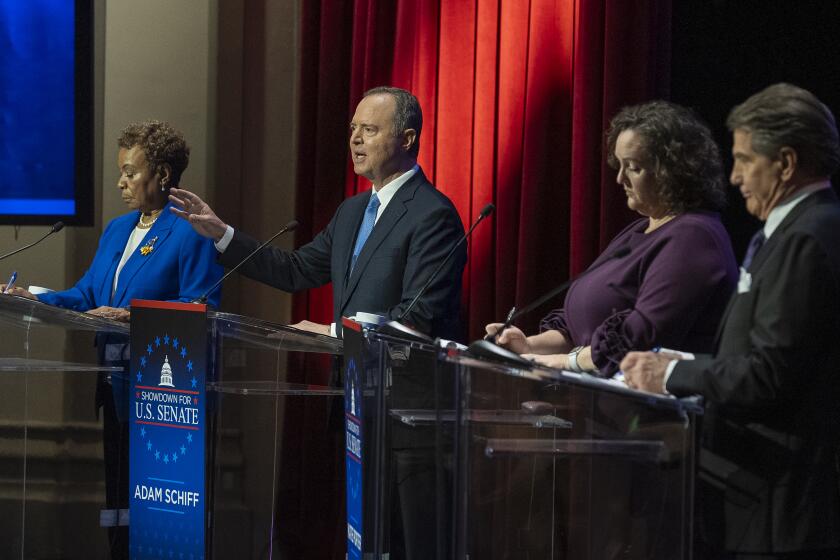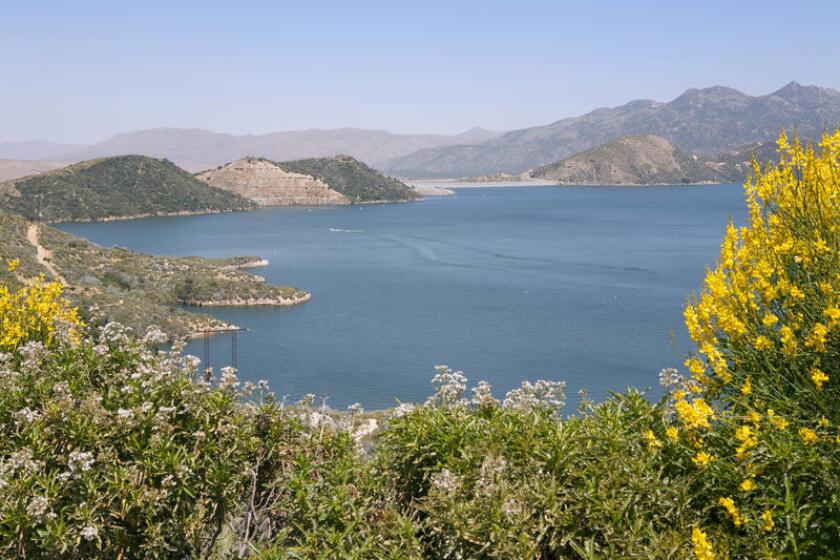L.A. Council Moves to Close Terminal Island Sewage Plant : Pollution: Contracting with a Carson facility would comply with a state order to end the discharge of partially treated waste into the harbor. The switch could save city millions of dollars.
In action praised for its potential economic and environmental benefits, the Los Angeles City Council has moved toward closing the city’s troubled Terminal Island sewage treatment plant so that millions of gallons of waste can be treated each day at a larger facility in Carson.
If an agreement can be reached with the Sanitation Districts of Los Angeles County, the independent agency that operates the Carson plant, officials estimate that Los Angeles could save millions of dollars over the cost of upgrading its Terminal Island facility.
*
The action also moves the city toward resolving an environmental controversy of nearly 20 years concerning the discharging of partially treated sewage into Los Angeles Harbor.
The council voted 13 to 0 Wednesday to direct staff members to pursue closing the plant and initiating talks with the Sanitation Districts for use of the Carson facility. The council also called for continued steps toward upgrading the Terminal Island plant in case an agreement is not reached.
The council action comes just a few weeks after city sanitation officials recommended either upgrading the plant at a cost of at least $39 million or constructing an outfall pipeline--at a cost of $34 million to $50 million--to discharge the treated sewage outside of Los Angeles Harbor.
The options were prompted by a requirement that the city comply with a 1974 state law banning the discharge of treated sewage into enclosed bays and estuaries--such as Los Angeles Harbor--unless it can be proven that the discharges enhance marine life.
But as city sanitation officials considered the options, some city lawmakers and environmental groups such as Heal the Bay began raising concerns. The cost of upgrading the plant, they said, was underestimated by millions of dollars, based on the city’s experience in other sanitation projects. And, critics said, the idea of complying with the state law by just dumping sewage farther out to sea is environmentally irresponsible.
So, with new attention directed at the treatment plant, officials resurrected an old idea--contracting with the County Sanitation Districts to use its facility, which has also been targeted by water quality authorities for improvement in recent years.
During a brief council debate, Chris O’Donnell of the city’s legislative analyst’s office said a review of the alternatives found that closing down the plant would be the city’s “most cost-effective option.” More than $100 million over 30 years in operating and maintenance expenses costs could be saved by using the Carson site.
*
Councilman Joel Wachs, a frequent critic of the city’s sanitation bureau, said the debate underscores the need to more closely watch the agency, which is overseeing a multibillion-dollar upgrading of Los Angeles’ vast sewer service system, including several treatment plants.
Specifically, Wachs said he is angry that sanitation officials previously had attempted to ramrod through a recommendation to upgrade the Terminal Island plant when other options--such as using the Carson facility--could save “tens of millions of dollars.”
“I have to tell you . . . this is a perfect example of an, ‘I told you so,’ ” Wachs said, crediting city staff members and whistle-blowers at the sanitation bureau for derailing the plan.
*
Meanwhile, the city’s decision to pursue use of the county facility prompted praise and some criticism from a Heal the Bay official.
“The good news out of this is . . . the (pipeline) outfall option for all intents and purposes is dead,” said Mark Gold, staff scientist for Heal the Bay.
At the same time, Gold said, Heal the Bay is disappointed that the city took so long to reach this point, especially when talks with county sanitation officials must be completed quickly because of an upcoming deadline.
“We just find it very poor time management because we are literally at the eleventh hour” for an agreement, Gold said, noting that the final plan for ending discharges into the bay is due to water quality officials by Dec. 31.
“This sort of stuff,” Gold said, “should have occurred six months ago.”
More to Read
Start your day right
Sign up for Essential California for news, features and recommendations from the L.A. Times and beyond in your inbox six days a week.
You may occasionally receive promotional content from the Los Angeles Times.






